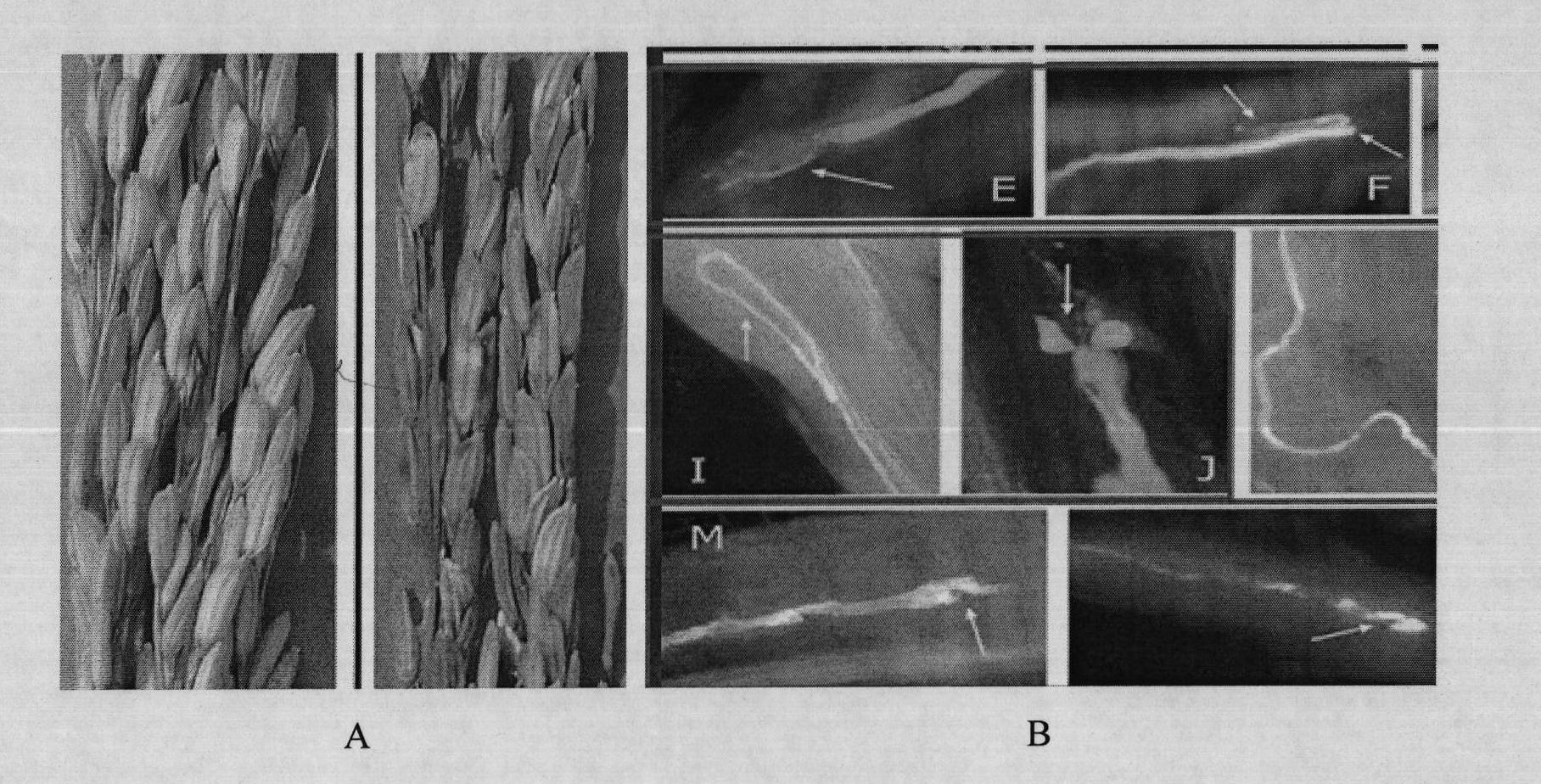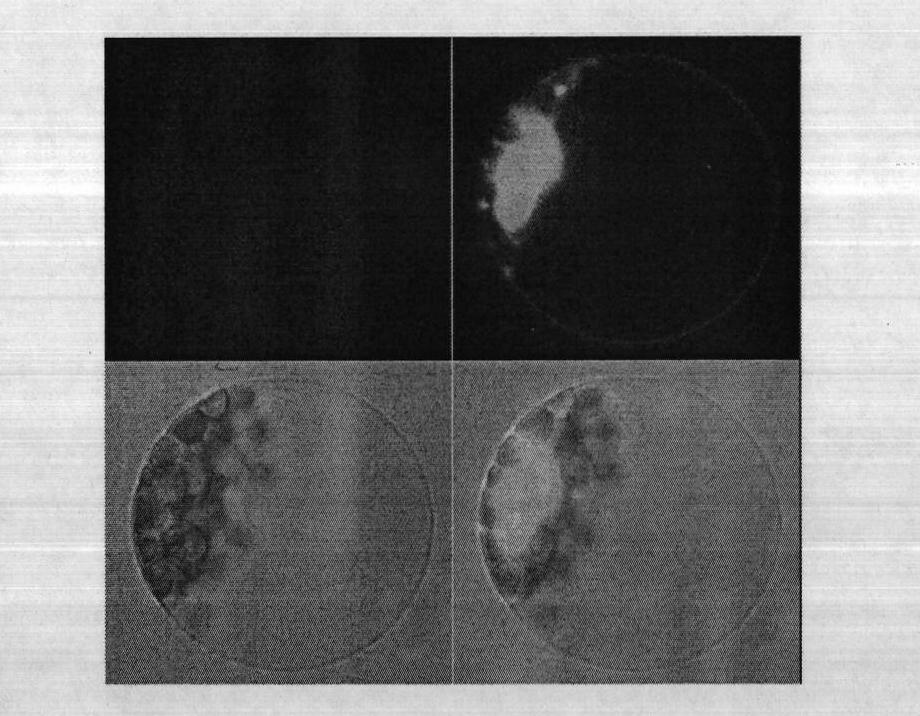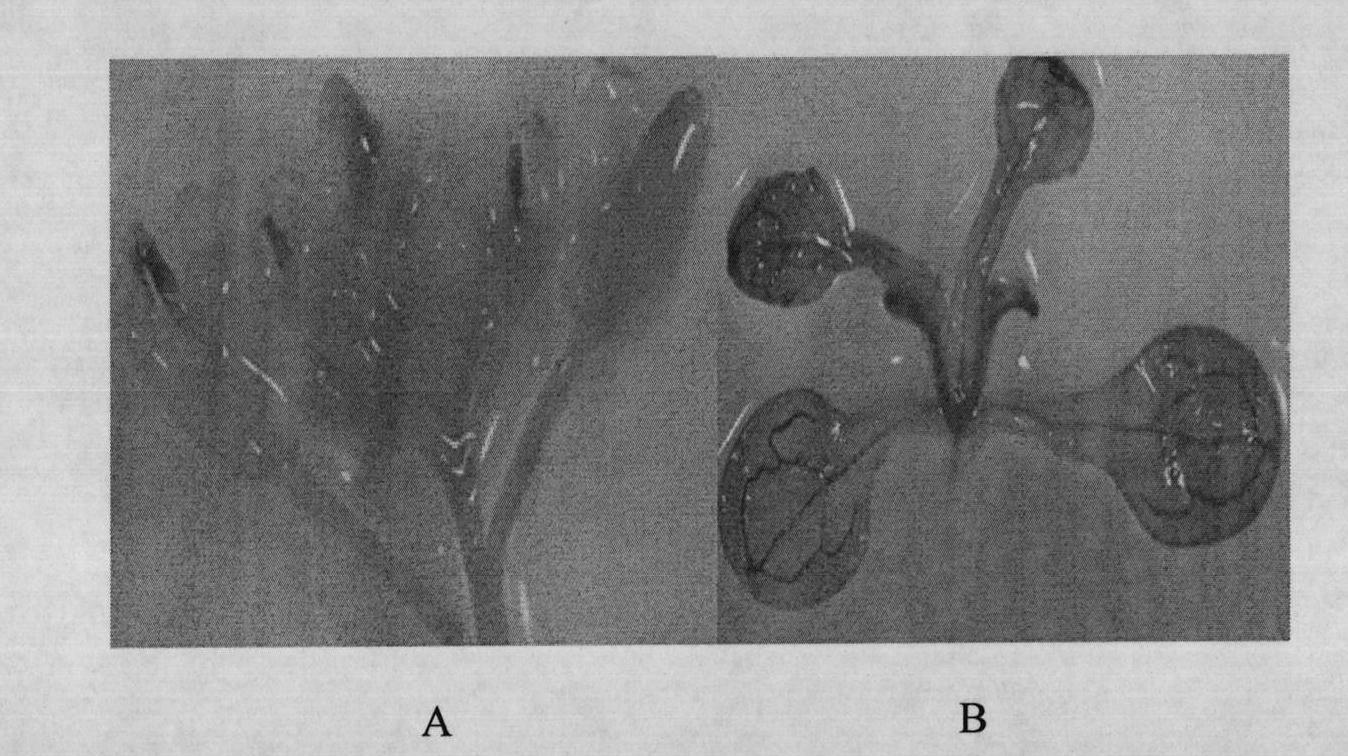Separated rice female fertility relevant protein as well as encoding gene and application thereof
A rice and female technology, applied in the field of plant genetic engineering, can solve problems such as unclear molecular mechanisms
- Summary
- Abstract
- Description
- Claims
- Application Information
AI Technical Summary
Problems solved by technology
Method used
Image
Examples
Embodiment 1
[0065] Example 1 Cloning of PTB1 gene
[0066] 1. Map-based cloning of the PTB1 gene
[0067] A sterile mutant was found in the rice restorer line 202R, and the mutant showed specific female sterility by cytology and pollen tube observation ( figure 1 A), the root cause of its sterility is the stunted growth of the mutant pollen tubes in the style ( figure 1B). G630 was used as the female parent to cross with the mutant to construct a segregated population, the gene was located, and the gene (PTB1) was cloned by fine mapping and map-based cloning technology.
[0068] Sequence comparison analysis showed that 252 nucleotides were deleted in the mutant ORF, resulting in a premature stop codon, which resulted in premature termination of translation and truncation of the expressed protein, resulting in a sterile phenotype in rice. The normal fertile phenotype can be restored by introducing the normal wild-type gene PTB1 into the mutant by transgenic method.
[0069] The sequenc...
Embodiment 2
[0082] Example 2 Expression pattern of PTB 1 gene
[0083] In this example, pBS-PTB1 and PA7-YFP were digested with Bamh I and Spe I restriction enzymes, and a full-length cDNA fragment of about 1.5K of the PTB1 gene was recovered after the digestion of pBS-PTB1, and ligated into the digested After the same restriction site of PA7-YFP, the recombinant was identified by restriction enzyme digestion and sequencing, and the cell-localized transient expression vector PA7-PT-YFP was constructed. Onion epidermal cells were bombarded with a gene gun, and Arabidopsis protoplasts were transiently transformed, and the fluorescence expression was observed by confocal microscopy. The results show that the PTB1 gene is mainly expressed in the cytoplasm in the cell ( figure 2 ).
[0084] The present inventors also studied the tissue expression and localization of the gene. pBS-P was digested with PstⅠ and BamhⅠ restriction enzymes PTB1 and P1300-GUS, recovery of pBS-P PTB1 The digeste...
Embodiment 3
[0085] Example 3 PTB1 gene rice transgenic test
[0086] In this example, the expression vector PHB (Mao et al., 2005, PNAS 102: 12270-12275, commercially available) was used as the vector for rice transgene. The vector encodes a bacterial origin of replication (ori), a kanamycin resistance gene (Kan r ), hygromycin resistance gene (Hyg r ), herbicide resistance genes (Bar r ), a 2×35S promoter, a NOS gene termination signal sequence, and a multiple cloning site (MCS) for ligating fragments of interest. The PTB1 gene or its fragment can be inserted into the restriction endonuclease site to construct a transgenic plasmid.
[0087] 1. Construction of PTB1 gene complementary expression vector
[0088] In this example, pBS-P was first digested with EcoR I and Bamh I restriction enzymes PTB1 and PHB, recovery of pBS-P PTB1 The promoter fragment of the PTB1 gene of about 1.5K after digestion by enzyme digestion is connected to the vector backbone of about 12K after the digesti...
PUM
 Login to View More
Login to View More Abstract
Description
Claims
Application Information
 Login to View More
Login to View More - R&D
- Intellectual Property
- Life Sciences
- Materials
- Tech Scout
- Unparalleled Data Quality
- Higher Quality Content
- 60% Fewer Hallucinations
Browse by: Latest US Patents, China's latest patents, Technical Efficacy Thesaurus, Application Domain, Technology Topic, Popular Technical Reports.
© 2025 PatSnap. All rights reserved.Legal|Privacy policy|Modern Slavery Act Transparency Statement|Sitemap|About US| Contact US: help@patsnap.com



